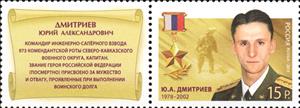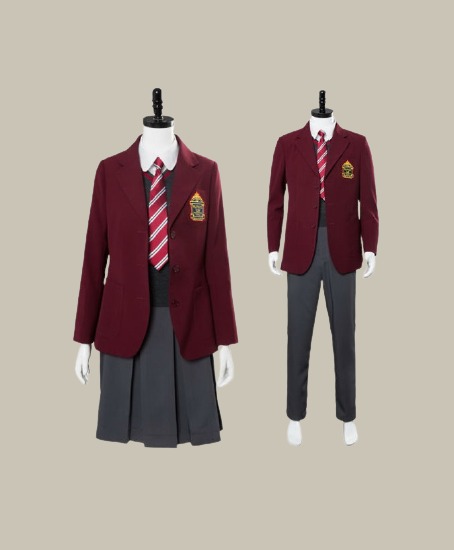Se-tenant: Hero of Russian Federation Yu. A. Dmitriev (1978-2002) (Russia 2013)
Hero of Russian Federation Yu. A. Dmitriev (1978-2002) (Russia 2013)
22 February (Russia ) within release Heroes of the Russian Federation goes into circulation Se-tenant Hero of Russian Federation Yu. A. Dmitriev (1978-2002) face value 15 Russian ruble
| Se-tenant Hero of Russian Federation Yu. A. Dmitriev (1978-2002) in catalogues | |
|---|---|
| Michel: | Mi:RU 1908 |
Se-tenant is horizontal format.
artist - Drobyshev A.Also in the issue Heroes of the Russian Federation:
- Se-tenant - Hero of Russian Federation Yu. A. Dmitriev (1978-2002) face value 15;
- Stamp - Hero of Russian Federation Yu. A. Dmitriev (1978-2002) face value 15;
- Mini Sheet - Hero of Russian Federation Yu. A. Dmitriev (1978-2002) face value 75;
- Stamp - Hero of Russian Federation O. G. Ilyin (1967-2004) face value 15;
- Mini Sheet - Hero of Russian Federation O. G. Ilyin (1967-2004) face value 75;
- Stamp - Hero of Russian Federation N. S. Maidanov (1956-2000) face value 15;
- Mini Sheet - Hero of Russian Federation N. S. Maidanov (1956-2000) face value 75;
- Stamp - Hero of Russian Federation E. N. Chernyshev (1963-2010) face value 15;
- Mini Sheet - Hero of Russian Federation E. N. Chernyshev (1963-2010) face value 75;
- Stamp - Hero of Russian Federation V. I. Shkurny (1959-2000) face value 15;
- Mini Sheet - Hero of Russian Federation V. I. Shkurny (1959-2000) face value 75;
Se-tenant Hero of Russian Federation Yu. A. Dmitriev (1978-2002) it reflects the thematic directions:
A uniform is a variety of costume worn by members of an organization while usually participating in that organization's activity. Modern uniforms are most often worn by armed forces and paramilitary organizations such as police, emergency services, security guards, in some workplaces and schools, and by inmates in prisons. In some countries, some other officials also wear uniforms in their duties; such is the case of the Commissioned Corps of the United States Public Health Service or the French prefects. For some organizations, such as police, it may be illegal for non-members to wear the uniform.
The Medal of Honor (MOH) is the United States Armed Forces' highest military decoration and is awarded to recognize American soldiers, sailors, marines, airmen, guardians, and coast guardsmen who have distinguished themselves by acts of valor. The medal is normally awarded by the President of the United States (the commander in chief of the armed forces) and is presented "in the name of the United States Congress." It is often, not strictly correctly, referred to as the Congressional Medal of Honor
Engineers, as practitioners of engineering, are professionals who invent, design, analyze, build and test machines, complex systems, structures, gadgets and materials to fulfill functional objectives and requirements while considering the limitations imposed by practicality, regulation, safety and cost.The word engineer (Latin ingeniator, the origin of the Ir. in the title of engineer in countries like Belgium and The Netherlands) is derived from the Latin words ingeniare ("to contrive, devise") and ingenium ("cleverness"). The foundational qualifications of a licensed professional engineer typically include a four-year bachelor's degree in an engineering discipline, or in some jurisdictions, a master's degree in an engineering discipline plus four to six years of peer-reviewed professional practice (culminating in a project report or thesis) and passage of engineering board examinations.



